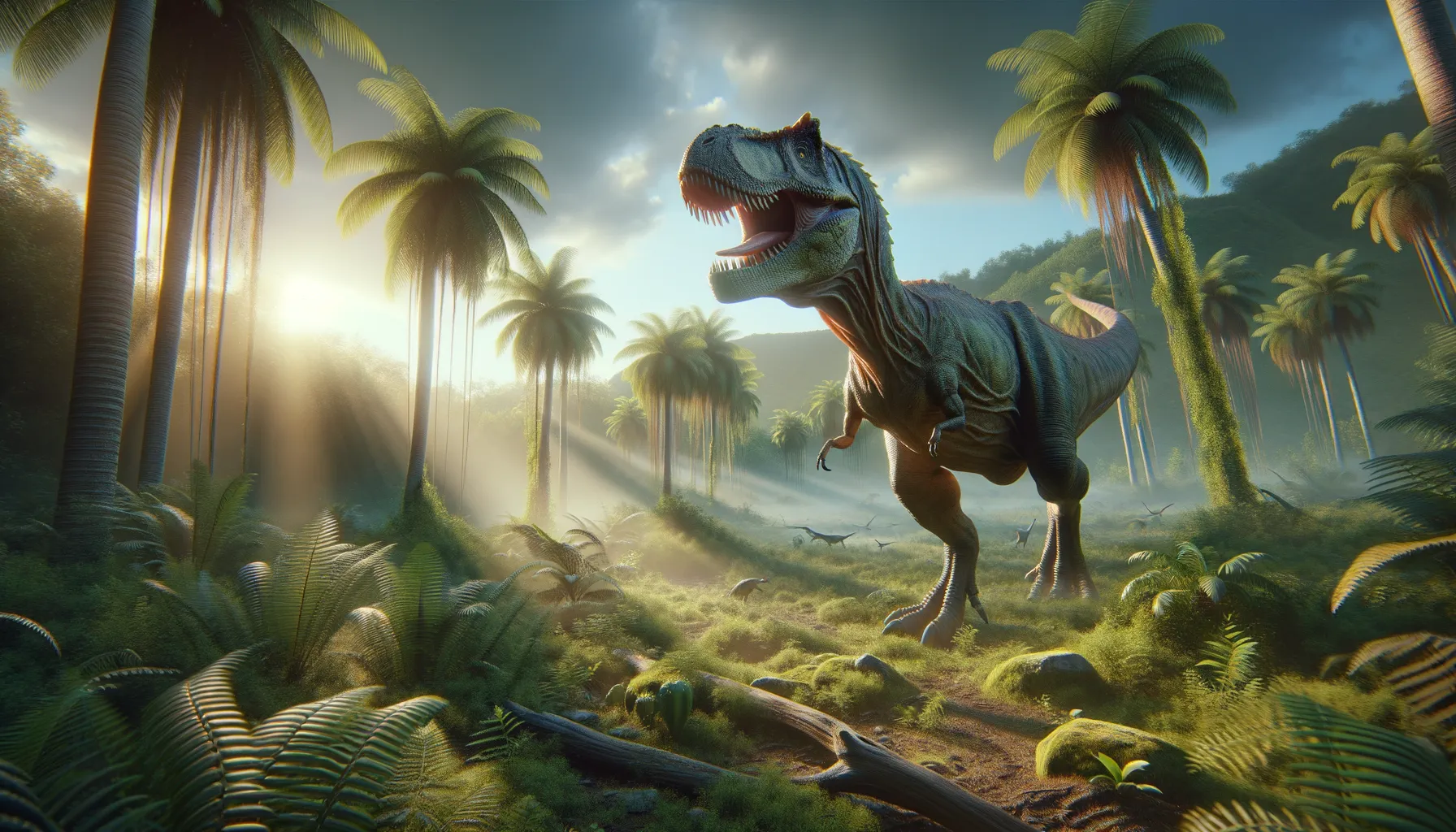
Alectrosaurus
Swift hunter from the Cretaceous plains.
Period
Cretaceous
Length
Measured about 5 meters in length.
Height
Stood approximately 2 meters at the hip.
Weight
Weighed around a quarter to half a ton.
Alectrosaurus was a nimble carnivorous dinosaur that roamed the ancient landscapes of Asia during the late Cretaceous period. With close ties to the better-known Tyrannosaurus rex, it shared notable features like strong hind limbs and impressive teeth. While smaller than its more famous cousin, its speed and agility made it a successful hunter. This dinosaur's discovery adds important insights into the diversity and adaptability of theropod dinosaurs during this era.
Diet
Alectrosaurus was a carnivore, relying on meat for its dietary needs. Its sharp teeth and agile build suggest it hunted smaller dinosaurs and possibly scavenged as well.
Hunting
This dinosaur likely used its speed to ambush prey, striking quickly with its powerful jaws. While hunting alone, it might have relied on surprise and agility to capture its meals.
Environmental challenges
Alectrosaurus faced competition from larger predators, which may have influenced its hunting and scavenging behavior. Environmental changes, such as shifting climate patterns and the changing availability of prey, also posed significant challenges. The fluctuating ecosystems would have forced it to adapt to new conditions and food sources.
Speed
Relatively fast for its size, aiding in hunting.
Lifespan
Estimated to have lived around 10-20 years.
First discovery
First discovered in Mongolia in the early 20th century.
Fun Facts
- Alectrosaurus means 'unmarried lizard', possibly because it was hard to pair it with other known dinosaur families when it was discovered.
- It lived during the Late Cretaceous period, around 83 to 74 million years ago.
- Alectrosaurus was a theropod dinosaur, which means it was a bipedal carnivore, walking on two legs like the T-Rex.
- It was discovered in the Gobi Desert of Mongolia in the early 20th century.
- Alectrosaurus was likely a fast runner, with long hind legs that suggest agility.
- The first Alectrosaurus bones were found by a crew led by the American Museum of Natural History.
- Despite being a relative of the mighty Tyrannosaurus, Alectrosaurus was much smaller, estimated to be about 5 meters long.
Growth and Development
Alectrosaurus, like many theropods, likely hatched from eggs and experienced rapid growth during its early years. This rapid development would have been essential for survival, quickly boosting its size for defense and hunting. As it matured, it would have honed its hunting skills and navigated the complex social dynamics of the Cretaceous era.
Habitat
Alectrosaurus inhabited the floodplains and semi-arid regions of what is now Asia. These environments provided ample hunting grounds and diverse prey species. It thrived in areas rich with vegetation, which supported a variety of herbivorous dinosaurs and other animals.
Interaction with other species
Alectrosaurus likely competed with other predators in its environment. It may have occasionally scavenged carcasses left by larger theropods. Social interactions with its own kind are less understood, but it might have displayed territorial or competitive behavior.
Natural lifespan
Its natural lifespan is estimated to have been between 10 and 20 years.
Reproduction
This dinosaur reproduced by laying eggs, likely in nests constructed from local vegetation. Like many theropods, it may have exhibited some level of parental care, guarding its nest against predators and environmental threats.
Social behaviour
While specifics about Alectrosaurus's social behavior remain unclear, it might have been a solitary hunter. However, young or inexperienced individuals could have formed loose groupings for mutual protection. Territorial displays and vocalizations might have played roles in its interactions with competitors.
Fossil locations
The primary fossil remains of Alectrosaurus have been found in Mongolia, within the Gobi Desert region. These discoveries help paleontologists understand the diversity of theropod dinosaurs in Asia during the Cretaceous period. Other fragmented remains suggest similar species distribution across parts of northern China.
